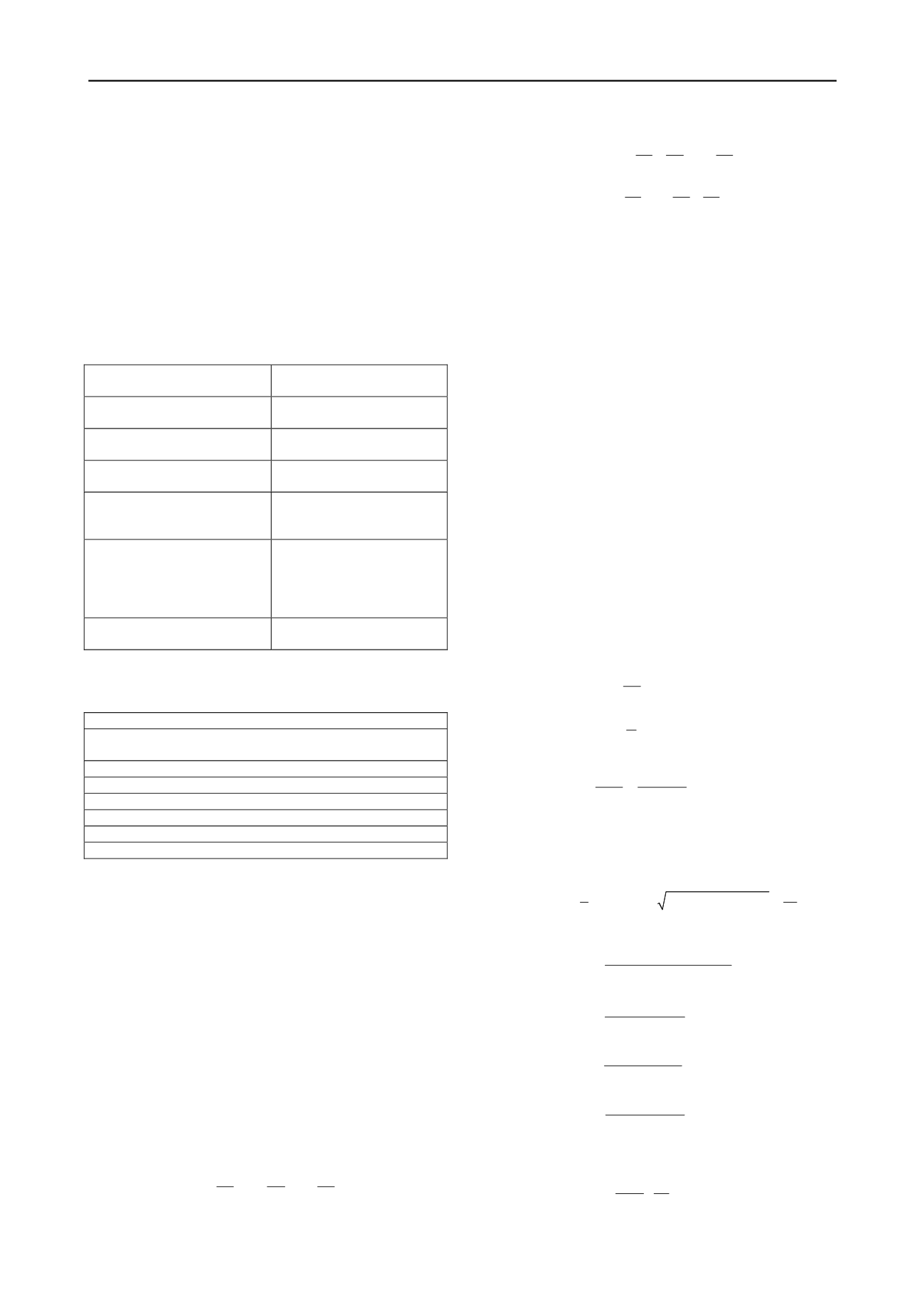
110
Proceedings of the 18
th
International Conference on Soil Mechanics and Geotechnical Engineering, Paris 2013
Proceedings of the 18
th
International Conference on Soil Mechanics and Geotechnical Engineering, Paris 2013
6 MAKING A QUALITY BOREHOLE IS THE MOST
IMPORTANT STEP
This is the most important and the most difficult step in a
quality pressuremeter test. Much has been tried and written on
the best way to prepare the hole. Special training is required for
drillers to prepare a good PMT borehole as drilling for PMT
testing is very different and almost opposite to drilling for soil
sampling (Table 1). Table 2 gives some general
recommendations to obtain a quality borehole with wet rotary
drilling which I would recommend in most cases.
Table 1. Differences between drilling for PMT testing and
drilling for soil sampling
DRILLING FOR PMT
TESTING
DRILLING FOR
SAMPLING
Slow rotation to minimize
enlargement of borehole diameter
Fast rotation to get to the
sampling depth faster
Care about undisturbed
borehole walls left behind the bit
Don’t care about borehole
walls left behind the bit
Don’t care about soil in front
of the bit
Care about undisturbed soil
in front of the bit
Advance borehole beyond
testing depth for cuttings to settle
in
Stop at sampling depth
Do not clean the borehole by
running the bit up and down in
the open hole; this will increase
the hole diameter
Clean borehole by running
bit with fast mud flow up and
down in open hole; avoids
unwanted cuttings in sampling
tube
Care about borehole diameter
Don’t care about borehole
diameter
Table 2. Recommendations for a quality PMT borehole by the
wet rotary method.
Diameter of drilling bit should be equal to the diameter of the probe
Three wing bit for silts and clays (carving), roller bit for sands and
gravels (washing)
Diameter of rods should be small enough to allow cuttings to go by
Slow rotation of the drill (60 rpm)
Slow mud circulation to minimize erosion
Drill 1 m past the testing depth for cuttings to settle
One pass down and one withdrawal (no cleaning of the hole)
One test at a time
7 THE PMT PARAMETERS
7.1 PMT Modulus and tension in the hoop direction
A number of parameters are obtained from the PMT. One of the
most useful is the PMT modulus E
o
from first loading This
modulus is calculated by using the theory of elasticity. One of
the assumptions in elasticity is that the soil has the same
modulus in compression and in tension. This may be true to
some extent for clays but unlikely true for sands. When the
PMT probe expands, the radial stress increases and the hoop
stress decreases to the point where it can reach tension. In
elasticity, the increase in radial stress is equal to the decrease in
hoop stress, so if the pressure in the PMT probe is 500 kPa, the
hoop stress at the borehole wall is -500 kPa (neglecting the at
rest pressure). The soil is unlikely to be able to resist such
tension and using elasticity theory in this case is flawed. The
following derivation shows the influence of having a much
weaker modulus in tension than in compression.
The general orthotropic elastic equations are
r
r
r
zr
r
z
E E
r
r
z
r
z
E E E
z
(9)
r
z
rz
z
r
z
E E
z
E
(10)
Where ε
r
, ε
θ
, ε
z
are the normal strains in the r, θ, and z
directions, σ
r
, σ
θ
, σ
z
are the normal stresses in the r, θ, and z
directions, E
r
, E
θ
, E
z
are the modulus in the r, θ, and z
directions, and ν
θr
, ν
rθ
, ν
zr
, ν
rz
, ν
zθ
, ν
θz
are the Poisson’s ratios.
Because of the symmetry rules, the following equations must
also be satisfied
r r
r
E E
(11)
z z
E E
z
(12)
r zr
z rz
E E
(13)
Here it is assumed that a compression modulus E
+
acts in the
radial and vertical direction and a much reduced tension
modulus E
-
acts in the hoop direction.
z
r
E E E
(14)
E E
(15)
Where E
+
is the modulus of the soil when tested in compression
and E
-
is the modulus of the soil when tested in tension. The
problem is further simplified by assuming that
1
rz
zr
(16)
2
z
r
(17)
3
z
r
(18)
The plane strain condition of the cylindrical deformation gives
0
z
(19)
The definition of the strains is, in small strain theory
r
du
dr
(20)
u
r
(21)
Now the equilibrium equation gives
0
r
r
d
dr
r
(22)
Using Eq. 8 to 22 leads to the governing differential equation
where the displacement u is the variable. The boundary
conditions are a displacement equal to zero for an infinite radius
and a pressure equal to the imposed pressure at the cavity wall.
The solution is a bit cumbersome:
2
12
21 12
21 12
11 22
1 (
)
(
) 4
2
o
ro
o
u
s
s s
s s
s s
r
(23)
Where s
11
, s
22
, s
12
, s
21
are defined as follows
2
2
11
2
2 1
1
1
1 2
1
E
s
(24)
2
12
2
2
1
1 2
E
s
(25)
2
21
2
2
1
1 2
E
s
(26)
1
22
2
2
1
1
1 2
E
s
(27)
z
E
(8)
Eq. 23 is to be compared with the equation for the isotropic
solution which is
1
o
ro
o
o
E u
r
(28)


